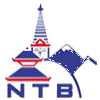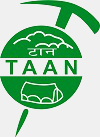-
SPRING FESTIVE TOUR
Overview
The coming of springs bring festive mood in Kathmandu among the Local Newari People. After long cold winter, spring approaches with better hope making the earth more fertile and lively. The winter is time for hibernation and symbolizes death while spring is the time for coming up and symbolizes life. Spring is the time that nature shows its kindest aspect and generously renders life to plants and animals.
As such this is the time for plantation. Therefore, this season is welcomed with celebrations.
According to your arrival time, we can combine your trip with one of the following festival.
Holi, the festival of color
Holi is celebrated across Nepal for two days. The first day is celebrated in Kathmandu Valley, while in the Terai region it is celebrated on the second day.
As a part of festival, people play with colors. They smear each other with different colors wishing good health and prosperity. The color also represents the lively atmosphere that spring brings in Nepal. The colorful people gather in different squares and streets to enjoy festive songs and dance.
Special venue recommended is at Basantapur Dubar Square in Kathmandu.
Bisket jatra, the New Year celebration
Bisket festival is celebrated in Bhaktapur city to celebrate New Year. This can be considered as the sequel of Spring Celebration. In the center of the city, a huge Wooden chariot is assembled which is pulled by two groups of people ( upper and lower part) This gives a glimpse of grand tug-of-war competition. When hundreds of participants uproar as they put effort to take the chariot to their side, you are enticed to join the troop.
The chariot is finally taken into an open ground where a tree trunk, symbolizing Serpent, is erected and this marks the New Year in Nepali Calendar
Thimi sindure jatra
The New Year celebration is carried out in different part of Kathmandu valley in different form. Among them, Sindure Jatra in Thimi Bhaktapur is very unique. To celebrate festival, people gather in the street to make a musical procession led by special chariot built for their god. In the procession, they smear themselves with Vermillion Powder and their relatives.
The Rato Machhindranath Rath Jatra
The Rato Machhindranath Rath Jatra is the only festival that lasts for months. Dedicated to the Rain God Machhindranath, this festival takes place in Patan and is supposed to bring rain to the Kathmandu Valley.
The farmers of Kathmandu Valley wait for the monsoon rain to plant their rice crop. A large chariot is made of wood and tied with vines and pulled through the streets of Patan coming to rest at various traditional spots where crowds of devotees arrive to pay homage and lay offerings.
The chariot procession is accompanied by Newar musicians playing traditional folk instruments. This is a Newari festival and the chariot is pulled by Newar youth who follow instructions from a senior who rides on the chariot.
The idol of the red painted Rato Machhindranath deity first goes through a ritual bath and a make-over with fresh paint. When the initial rites are over, the idol is placed on the chariot. As Lord Machhindranath views his devotees from a high seat of his chariot, he receives rice and vermilion powder as offer. The four wheels of the chariot represent the powerful Bhairab the fiercefull incarnation of Shiva,
The chariot is several stories high and with no nuts and bolts to hold it together, it is normally tilting to one side. The collapsing of this chariot is seen as portentous.
After several months of moving through major parts of Patan, it finally comes to rest in Jawalakhel, the more modern section of the city, where a huge crowd gathers to watch the display of an ancient bejeweled vest on Bhoto Jatra. This event is attended by the head of state as well as the Living Goddess Kumari of Patan.
-
AUTUMN FESTIVE TOUR
Overview
Majority of People living in Kathmandu Valley are Indigenous Newars. By profession they are farmers. So, its agro based economy is justified by the feast and festival celebrated in autumn. In this season, the farmers feel rich and prosperous with the new harvest ready to store. So, this is the time to rejoice and feed lavishly.
Yes, Kathmandu Valley gets colorful and musical in festive mood. Especially, after the end of long monsoon, the atmosphere becomes wonderfully pleasant. The blue sky, White snowcapped mountains, Green Hills and then gilded pagoda temples give a perfect setting for celebration. You will find them juxtaposed from top to bottom as if in their hierarchy!
In the Kathmandu valley, the local Newars, also known by “Jyapu”, carry out the rituals of festival in a great fervor. They are not only the skill farmer but also the good musician, dancer and festive leader.
We have designed this tour with an objective to help our clients witness and participate in the festival and its social part.
Based on your arrival time, your trip can be combined with any of the following festival in Kathmandu.
Gai Jatra (July-August)
Gai Jatra is a carnival of dancing, singing, mirth and laughter. Also known as ‘The festival of cow’, it is celebrated in the Kathmandu Valley to commemorate the death of loved ones. As a part of the festival family members of the deceased of the past year send people dressed as cows to parade on the streets.
The festival is celebrated for nine days. However, the family commemorates the deceased member only on the first day. On the rest of the days, the carnivals are mainly meant to merry making and mocking. During the festivals, the streets in the city remain in action with different group of local Newari People dancing with mask and stick.
Haritalika Teej , the festival of Women (August)
Occurring around the month of August, Teej is a festival celebrated by women all over Nepal for three days. Decked up in red saris and red tika, bangles, women sing and dance with traditional folk songs for days. It is especially significant for married women, when they get a special invitation to visit their maternal home and feast. Following a long feast also known as Dar, the women, sit for a 24 hour long fasting, where most do not eat or even drink water. What is fascinating is to watch women of all age group, young and old, dance for hours in the heat, rain, without a drop of water or food for an entire day.
It is a sight to behold at the Pashupatinath temple, where thousands of women draped in Red and green throng the premises of the temple. Observers can take photos of these women dancing merrily, where sometimes foreigners, especially women tourists are requested to participate in the merry-making. The significance of such a festival is for women to ask for special blessings by Lord Shiva, to have a good husband in life, and to pray for his longevity and prosperity. On the final day of this three day festival Women satisfy seven saints offering them food, money and various offerings, and also bathing with Red mud and brushing their teeth with Datiwan (branches of a bush tree) hoping this purifies their body and soul.
IndraJatra in Kathmandu (September)
The eight-day long Indra Jatra festival falls in September and is one of the most exciting and revered festivals of the Newari community of the Kathmandu Valley. This also marks the beginning of a month-long festival season of autumn. It begins with the erection of a wooden pole made of pine at Basantapur Sqaure in front of the old Hanuman Dhoka Palace. For the pole-raising ceremony, hundreds of spectators gather at the Palace Square and on the surrounding temples. The chariot of Kumari, the Living Goddess, is taken out in a procession through the main streets of Kathmandu. Masked dancers known as Lakhay take to the streets almost every evening accompanied by loud drums. The festival commemorates the time when Indra came down from heaven in human form to look for an herb. Each night of Indra Jatra the shrines and ancient palace buildings around Kathmandu Durbar Square are aglow with oil wicks. Each night on the platform in front of the temple of the Living Goddess, there is an enactment depicting the ten earthly incarnations of Lord Vishnu. In the afternoon of the day before full moon, ecstatic mobs gather near Hanuman Dhoka Palace for the long-awaited Living Goddess’ chariot procession to catch a glimpse of the revered little Newari girl who has been deified as Kumari. The chariot of the Kumari followed by two other smaller chariots carrying a representative of Ganesh and Bhairav is taken to different parts of the old Kathmandu. The festival of Indra Jatra ends with the lowering of the (lingam) pole bearing Indra's flag amidst religious ceremonies.
Have glance of Kumari. She is a mascot! Kumari is derived from the Sanskrit word Kaumarya,which means princess. Learn the historical significance of worshiping a girl as a goddess; be a part of the tradition that dates back to the 17th century where two of the world’s oldest religions Hinduism and Buddhism interlink.
Dashain festival all over Nepal. (September- October)
This is the longest Hindu festival in Nepal, traditionally celebrated for two weeks with prayers and offerings to Durga, the Universal Mother Goddess. The great harvest festival of Nepal, Dashain is a time for family reunions, exchange of gifts and blessings, elaborate pujas, ritual bathing and animal sacrifices. Dashain honors the Goddess Durga, who was created out of the shakti or energy of all the gods, armed with weapons from each of them. Goddess Durga, symbolizing valor and prowess, is worshipped and offered sacrifices to ensure the devotees' progress and prosperity. During the first ten days, pilgrims flock to various river confluences early in the morning and sacred shrines in the evening.
Ghatasthapana, Phool Pati, Mahaastami, Nawami and Vijaya Dashami are the series of the events under Dashain each marked with a different set of rituals. During Dashain, men and women in their fineries visit their elders to seek tika (a dab of red vermilion mixed with yogurt and rice) accompanied by blessings. Sword precessions (Paayaa) are also held in various part of the Kathmandu Valley. A large number of animals are officially sacrificed at Hanuman Dhoka during Nawami which is attended by officials, invitees and visitors. During the ninth day, the Taleju Temple which is normally out of bounds is also open to the public. The last day, known as Kojagrat Purnima, is the full moon. New clothes, home visits, grand feasts, kite flying and village swings are the highlights of Dashain. Around this time the population of Kathmandu is greatly reduced as many head home to various parts of the country. On the tenth day known as Tika, people are seen moving around with their foreheads covered with rice tika, wearing new clothes. There is much feasting as people visit relatives’ homes to receive tika and blessings.
Tihar, the festival of Lights (October)
The 5-day festival of lights, known as Tihar honors Yama, the God of Death but the worship of Laxmi, the Goddess of Wealth dominates the festivities. On the first day, the crow, the informant of Yama is worshipped. The second day is for worshipping the dogs as the agent of Yama. On the third day Laxmi is worshipped. The fourth day is for the draught animal, oxen when the Newari community does Mha puja dedicated to oneself. The fifth day is Brothers’ Day when sisters put tika on their brothers’ foreheads and give blessings. This festival is notable for the lighting up of homes with anything from candles, oil-wick lamps and electric lights. Houses all over the country are lit up with extra lights and decorated with garlands. A great view of brightly lit-up Kathmandu city from the Swoyambhunath Stupa is a rare sight. The celebrations begin with the adoration of crows and dogs. Leaf dishes of rice, incense and light are set out for the dark messenger, while dogs are worshipped and offered goodies. During the day known as Laxmi Puja, the Goddess of Wealth, is welcomed to people’s homes by making a path of footprints leading into the house. All lights are kept on and the doors and windows kept open to let in the goddess. Rows of lamps are placed along windows and doors, with the strong hope that Laxmi, the Goddess of Wealth notices and enters. The day also belongs to the cow that represents Laxmi. Bhai Tika is the day people look forward to. In some communities, sisters and brothers accept tika from each other. Bhai means brother in Nepali. Brothers and sisters honor each other and the sisters pray to Yama, the God of Death, for their brothers' progress, prosperity and longevity. The brothers bring gifts to their sisters and the festival ends with feasting. It is also traditional to go from house to house singing Tihar songs and bestowing blessings, whereupon the residents of the house give money in return. Fireworks also fill the skies despite a government ban on fire-crackers.












